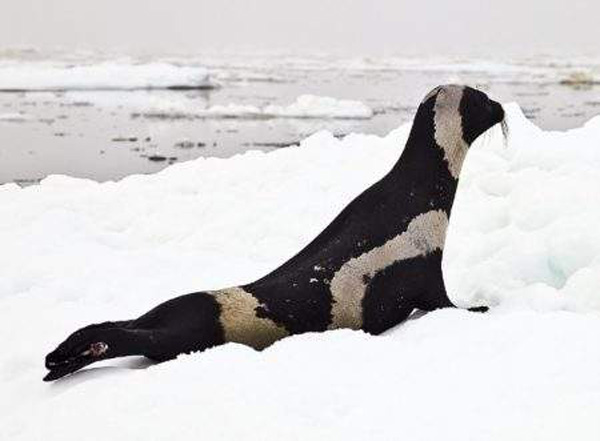Ribbon Seal
IUCN
LCBasic Information
Scientific classification
- name:Ribbon Seal
- Scientific Name:Ring seal, ribbon seal
- Outline:Carnivora
- Family:Pinnipeds Phocaeodae Phoca
Vital signs
- length:160-170cm
- Weight:70-80kg
- lifetime:25-30years
Feature
Cute in black and white
Distribution and Habitat
Distributed in the North Pacific, Bering Sea, and Sea of Okhotsk. Seasonally migrates to the Chukchi Sea, the Western Beaufort Sea, and the northern part of the Sea of Japan.
Origin (sea area): Japan, Russia, and the United States.
Mainly inhabits the cold waters of the Arctic, especially deep waters with small pieces of loose floating ice.
Appearance
Adult seals have four white stripes (or mixed with yellow) on their dark fur and are diurnal foraging species.
Details
Ribbon seal is a small species of seal with no subspecies.

Usually live alone, usually gather in small groups. Most of their lives are spent migrating and foraging between breeding grounds and floating ice oceans. Once the breeding season arrives, seals of all ages, genders and sizes will gather together. Both molting and reproduction occur when the ice breaks in spring. Adult seals land on the ice to reproduce, while the young molt on the ice. The banded seal has a sound-making air sac in its abdomen for underwater communication.
When the banded seal feels a threat after landing, it will spend more time looking around than other pinnipeds, which may be due to the decreased vision after leaving the water. They will use their front flippers to dig ice and push.
Listed in the IUCN Red List of Threatened Species: Data Deficient (DD), 2008 assessment.
Listed in China's "National Key Protected Wildlife List": National Class II Protected Animals (effective December 10, 1988, all species of Pinnipeds)
Listed in the "National Key Protected Wildlife List of China" Class II.
Protect wildlife and eliminate game.
Maintaining ecological balance is everyone's responsibility!








